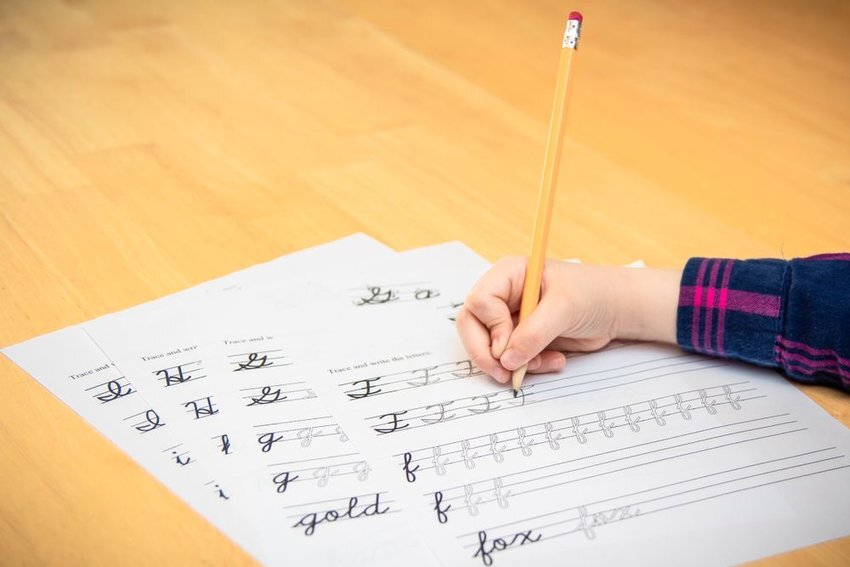Unlike the current classes of young scholars, you probably learned cursive writing around third grade. Maybe you were excited to decipher all those loopy letters and add some formality to your writing. Maybe you dreaded every second of practicing on that awful lined paper. Either way, you probably asked yourself, why am I doing this?
Who invented cursive handwriting? After thousands of years, it’s impressive that cursive has survived despite our reliance on digital writing and its removal from most modern curriculums. The important question: Is cursive still relevant today?
Who Invented Cursive?
As with many thousands-of-years-old practices, cursive writing was more of a collective effort than something we can attribute to one person. It goes as far back as the Roman Empire, after written language first developed. Square capitals were used on inscriptions on buildings and monuments (some of which are still standing), but cursive (or script) was used for daily writing.
Scripts and styles have changed since the fifth century. In the eighth century, monks created the Carolingian script — the earliest form of standardized cursive that others built upon.
This script evolved during medieval times, and its twists and curls became harder to read before the Renaissance revived the Carolingian way. The earliest form of cursive you probably recognize is called Copperplate. Calligrapher Timothy Matlack penned Thomas Jefferson's words on the original copy of the Declaration of Independence using the Copperplate script.
While beautiful, this fancy calligraphy just wasn't practical for everyday writing. A teacher named Platt Rogers Spencer developed a new form of penmanship around the mid-1800s. He came up with the name "chirythmography," from the Greek words for "timed hand writing." He used a metronome for writers to keep pace with his elliptical letters, which he claimed were inspired by nature. The "Spencerian" method was taught in schools for the latter half of the 19th century.
Quick-working clerks and telegraph operators translating Morse code into script found the Spencer cursive still too time consuming. Next up: Austin Palmer and the Palmer Method. His idea was to make cursive writing more practical and lose the fancy flourishes from the Renaissance days. This form of script was very popular in the early 20th century and can probably be seen in old letters from your great and great-great grandparents.
Penmanship started to become big business. It was taught in grade schools, and adults entering the business world got a leg up if they completed a course in a penmanship school. The Zanerian College of Penmanship became the Zaner-Bloser Company, selling handwriting instruction material to schools. (Fun fact: Still around today, Zaner-Bloser, Inc., publishes Highlights for Children magazine.)
The Zaner-Bloser cursive and the later D'Nealian cursive are the simple scripts that were taught in grade school for the second half of the 20th century.
Does Anyone Still Use Cursive?
Cursive writing has been used less and less since the 1980s. Quite simply, since computers became the new big thing, people don’t write as much by hand. Grade schools teach computer skills instead of penmanship. So is there still a use for cursive? Absolutely!
Handwriting helps us remember. This goes for all handwriting, not just cursive. The Wall Street Journal says that actively forming letters with pen and paper reinforces language concepts and helps the brain remember. It’s a lot more effective than just reading and memorizing, especially for kids. That’s why so many teachers stress taking notes by hand — they know that many students who put pen to paper tend to remember concepts better.
And no matter how many digital devices you have, you’ll need to use writing utensils at some point. Maybe you need to scribble a note or mark something in a book. Maybe your phone died, and you can’t type an appointment into your calendar. Technology is good, but it’s not omnipotent. Instead of sloppy chicken-scratch, take some pride in your penmanship. Start reviving the lost art of cursive today.

